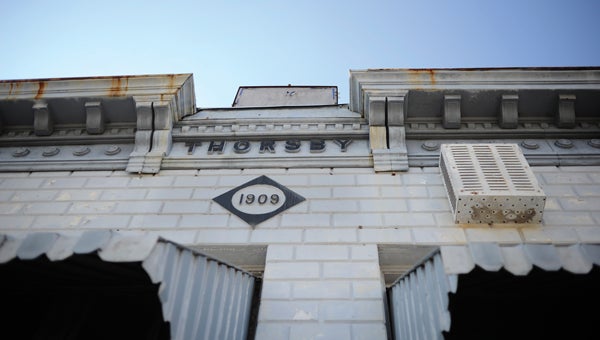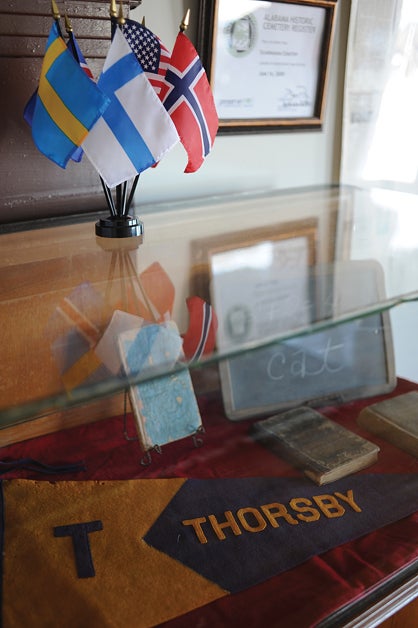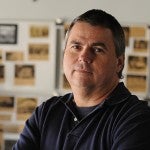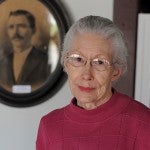
By Stephen Dawkins
Thorsby has a rich history.
The town was one of only a few in Alabama to be founded by Scandinavian settlers. It’s the only one of those Scandinavian settlements still thriving enough to be able to take advantage of its unique history.
Thankfully, the town also has a group of people dedicated to preserving that history.
The formation of the Thorsby Historical Preservation Committee in 2007 was a significant step toward preserving Thorsby’s history and using it to better the lives of those currently living in the community. Another major development was the recent opening of the Thorsby Museum in a new location, the old Thorsby Savings Bank building at the corner of Montgomery Avenue and Jones Street.
The Historical Committee was formed in 2007 when then-mayor Tom Bentley and the town council were trying to decide what to do with the old Thorsby Elementary School, which had become dilapidated. Glenn Littleton was among several concerned residents who accepted Bentley’s challenge of looking into what could be done with the building and then reporting back to the council.

“I was on the zoning board at that time, and we kind of got involved with the old school building,” Littleton said. “We needed an organization.
“A lot of people originally got involved because of the school, but there are so many other things to do.”
A flag court has been installed at Richard Wood Park. A historical marker was erected at the Scandinavian Cemetery, and a gateway was put up at the cemetery to match one that used to be at the spot.
Perhaps the committee’s most important project has been moving the town’s museum from a back room at Helen Jenkins Chapel to the old bank building.
The chapel was renovated in the late 1990s, and around that time one of its rooms became a home for some historical items. The “museum” was opened during the town’s annual Swedish Festival, but it was out of the way and out of mind for most residents.
Then, when it was discovered earlier this year that the chapel had suffered damage from termites and would need to be closed, repaired and renovated, Julia Wood graciously allowed the museum to move into the old bank building, which she owned (her husband, the late Richard Wood, purchased the property).
With a more spacious home, the museum has started to grow. One of the most interesting recent additions is the original organ that was used for church services in the Swedish Lutheran Church that once stood on Jones street. There’s an antique “fire engine”–basically a big tank on two wheels that would be pushed around similar to a wheelbarrow–at the old school that could be moved to the museum. Many of the photographs were donated by the family of Theodore Thorson, Thorsby’s founder.
“There will be people that will bring in photographs and articles,” said Tracia Bussey, another of the original Historical Committee members. “Then every once in a while, somebody will bring something that’s really neat.”

The building that houses the museum is an artifact itself. It was built in 1909 by Iver S. Gerald, a Norwegian settler, as the Thorsby Savings Bank. The bank was the only surviving structure of a fire on Main Street in 1915 because it was made of block instead of wood. The bank eventually moved across the railroad tracks–and Highway 31–into the building that is now Thorsby Town Hall.
The original vault and molded tin ceilings are still intact. Other parts of the building have been renovated, including the wood floors, which were recently re-finished. There is still work the committee wants done, including plumbing and the installation of a heating and air source so the committee can use the building as a location for meetings and open houses.
“The reception has been very positive so far,” Bussey said. “So many people are so amazed to walk in that room and see how nice it is, and all the things that are available. The neatest ones are the people that grew up in Thorsby, and they remember coming into that building when it was a bank.”
Thorsby’s history has been so well documented because of the tireless work of volunteers. Jane Sutlive is considered the matriarch of the effort. Bussey said Sutlive, who lives in what was formerly the boys dormitory at the old Thorsby Institute, has spent countless hours collecting items and archiving newspaper clippings.

“She has done many, many, many hours of work that nobody even knows about,” Bussey said.
An ever-improving museum could help inspire a new generation of people willing to work for the town’s history. She remembers visiting the museum in its old location one year during the Swedish Fest. “All of that was so intriguing,” she said.
So much so that she has now chaired the town’s Swedish Festival committee for 12 consecutive years. But like her fellow Historical Committee members, Bussey’s interest in history stretches back much earlier than her official involvement with preserving the town’s heritage.
“Anything to do with history is something that is close to my heart,” she said. “I think it really enriches a community and gives people a sense of value about who they are and where they come from.”
